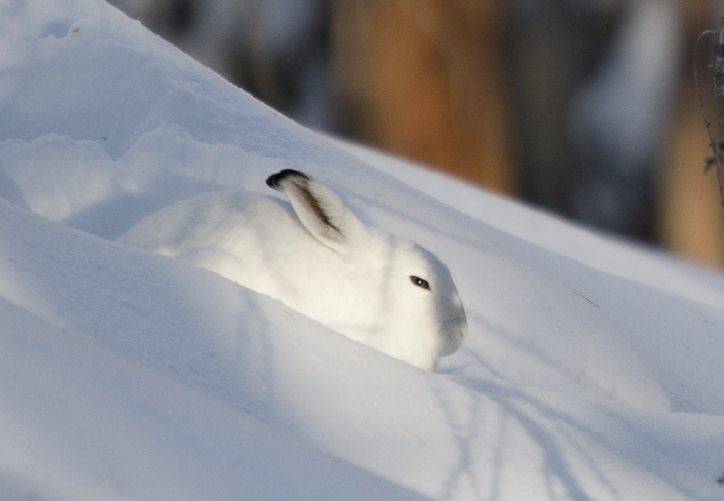The mountain hare shifts in altitude
A paper published in the journal Biodiversity and Conservation, edited by ISPRA and the University of Turin investigates the relationship between ten years of climate change, and the distribution of the mountain hare in the Aosta Valley, Western Italian Alps
Typical inhabitant of medium and high Alpine altitudes, the mountain hare (Lepus timidus), is potentially affected by the climate changes underway. It is a mammal adapted to high mountains or extreme latitudes, and owes its name to the seasonal change in color of the coat: during the winter it changes to a white coat, which is why it is also known in Italy as ‘the white hare’.
Well adapted to cold climates, the mountain hare could be affected by the increase in temperatures as well as by the possible expansion, towards higher altitudes, of the European hare, Lepus europaeus. The latter species, more adapted to low altitudes, could rise in altitude and increase its overlap with the mountain hare, with which it competes.
The study by ISPRA and the University of Turin, in collaboration with the Gran Paradiso National Park, therefore examines the changes in the presence and distribution of both species in an Alpine valley, comparing data from 2009 and 2021. The study quantifies ,for the first time, what the impacts of more than a decade of climate change could be on the two species of hare. Analyzing the data collected in the same localities after 12 years, it shows that the mountain hare was more common in 2009, especially with increasing altitude, in pioneer vegetation and rocky areas. However, the presence of the European hare has also been documented at high altitudes, in landscapes atypical for this lowland species.
The ongoing climate changes caused mainly by greenhouse gas emissions are causing the earth's temperatures to rise. Among their effects, research has documented direct and indirect impacts on ecosystems and animal and plant species. As temperatures rise, species tend to move to higher latitudes or altitudes in search of cooler climatic conditions. Alpine species are more at risk as altitudinal migration is limited by the height of the mountains. Over the last century, substantial upward shifts in distribution limits have already been documented for many animal species, with a reduction in their diffusion at low altitudes and a general loss of range. Variations in the geographic distribution of species can also have cascading effects on the interactions between different species

Mountain hare. Photo: D. Massoni

